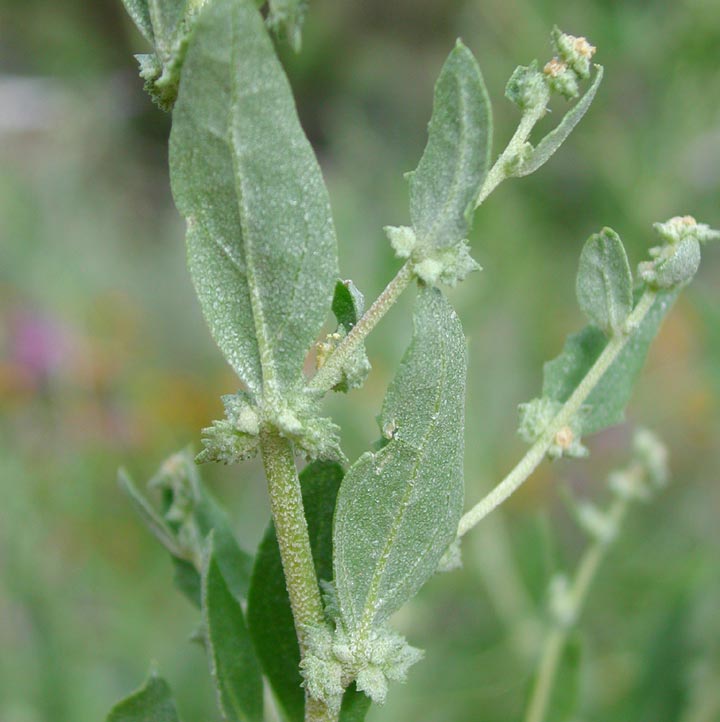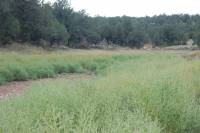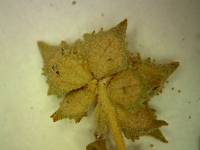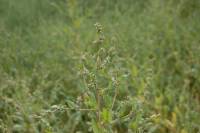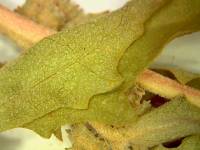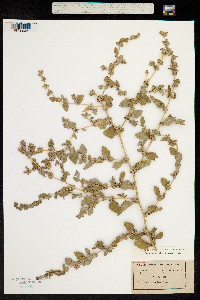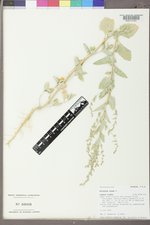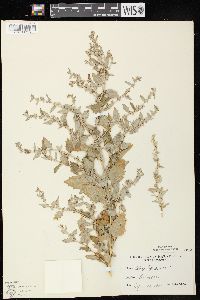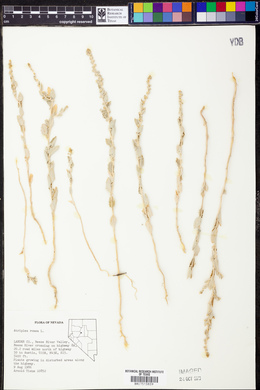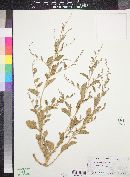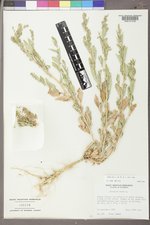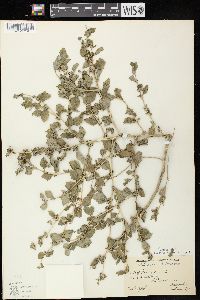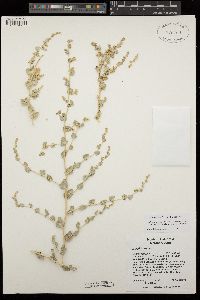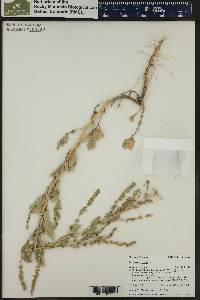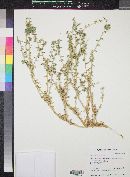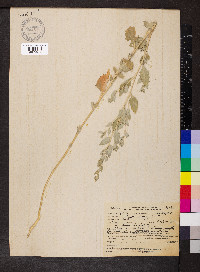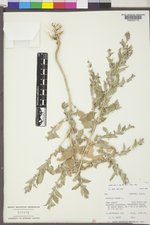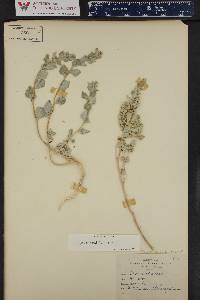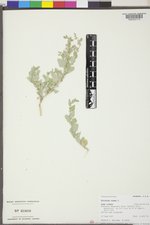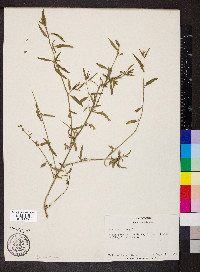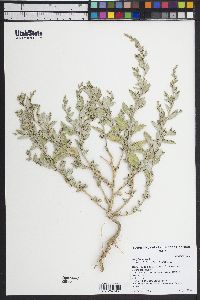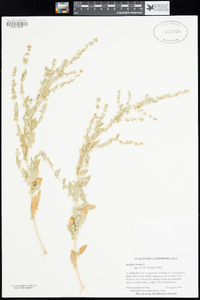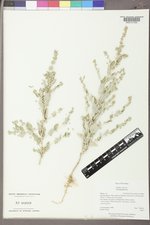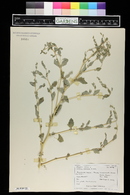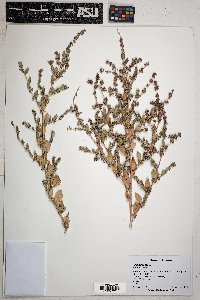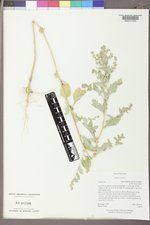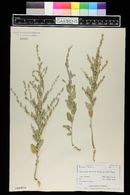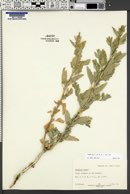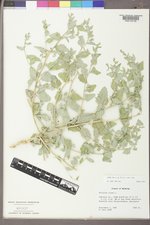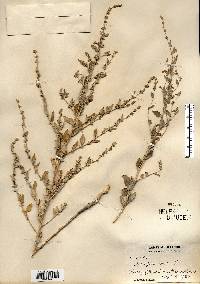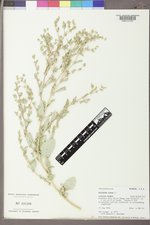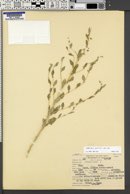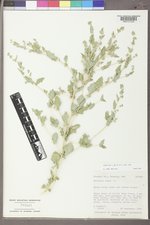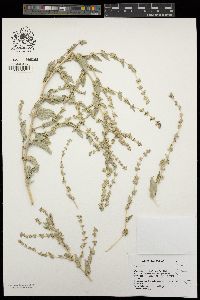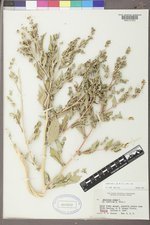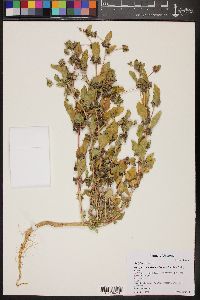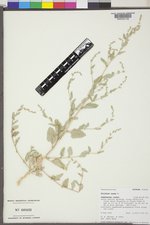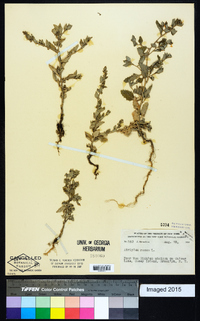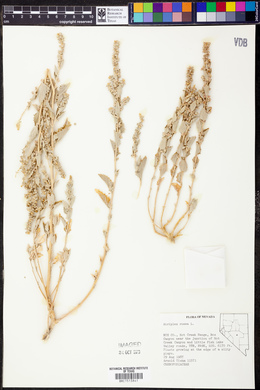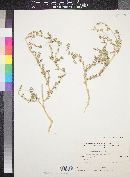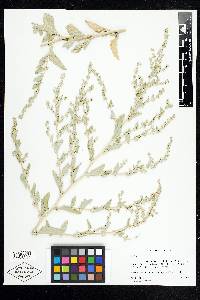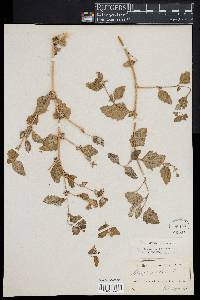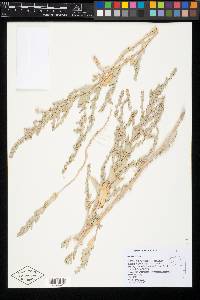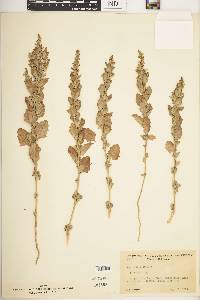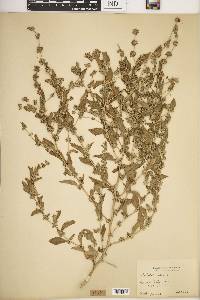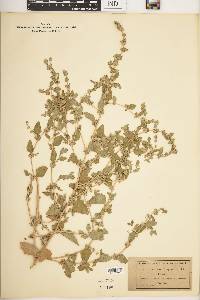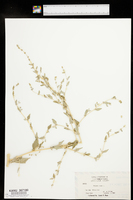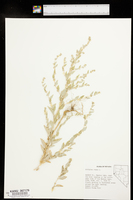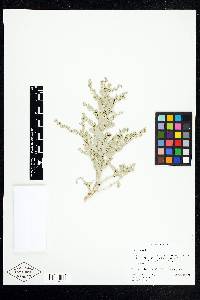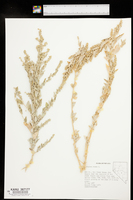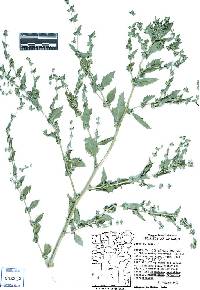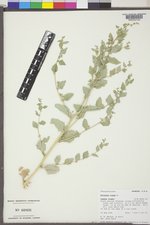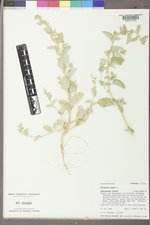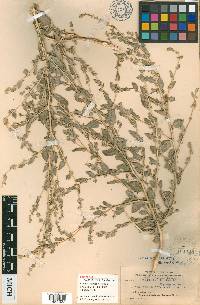Atriplex rosea
|
|
|
|
Family: Amaranthaceae
Tumbling Orache, more...tumbling saltweed, redscale saltbush, redscale saltweed
[Atriplex arenicola Hauman-Merck, moreAtriplex spatiosa , Atriplex verticillata Cav. ex Lag.] |
Herbs, erect, coarse, 1-10(-20) dm. Stems simple or more commonly divaricately branching throughout, branches terete; herbage whitish scurfy to glabrate. Leaves alternate, short petiolate, blade prominently 3-veined, ovate to lanceolate, mainly 12-80 × 6-50 mm, margin irregularly sinuate-dentate and often subhastately lobed or rarely some entire, apex acute to obtuse. Flowers in axillary glomerules or interrupted terminal spikes. Staminate flowers with 4 or 5 sepals. Pistillate flowers in axillary glomerules of 5-10. Fruiting bracteoles prominently 3-5-veined, sessile or short stipitate, (3-)4-6(-10) mm and as wide, sometimes subhastately lobed at base, conspicuously dentate, sharply tuberculate to almost smooth on faces. Seeds dimorphic: brown, 2-2.5 mm wide, or black, 1-2 mm wide; radicle inferior. 2n = 18. Flowering mid summer-fall. Disturbed sites, often in riparian habitats or in barnyards or on animal bed grounds, along roadsides and irrigation canals, with juniper, sagebrush, rabbitbrush, pinyon-juniper, Salsola, Chrysothamnus, Atriplex spp., and other weedy species; 0-2600 m; introduced; Alta., B.C., N.S., Ont., Sask.; Ariz., Calif., Colo., Fla., Idaho, Mass., Mich., Mo., Mont., Nebr., Nev., N.J., N.Mex., N.Y., N.Dak., Ohio, Oreg., Pa., Utah, Wash., Wis., Wyo.; Eurasia. At least some early collections were from ballast dumps at harbors on both coasts. It seems probable that the plants were quickly spread inland from initial centers of introduction by birds and more recently along railroads.
Annual herb to 2 m tall Stem: upright, branched or sometimes unbranched, coarse, sometimes white-scaly. Leaves: alternate, short-stalked, 1 - 8 cm long, 6 mm - 5 cm wide, egg-shaped to lance-shaped with a blunt to pointed tip, prominently three-veined, irregularly toothed, often lobed, scaly, more or less mealy. Inflorescence: a small, axillary, compact cluster of flowers (glomerule) or an interrupted spike of flowers. Flowers: either male or female, borne on the same plant (monoecious), greenish, tiny. Male flowers with four or five sepals and stamens. Female flowers in small, axillary, compact clusters (glomerules) of five to ten, without petals and sepals, and enclosed within a pair of small, leaf-like bracts (bracteoles). Stigmas two. Fruit: enclosed within a pair of small bracts (bracteoles). Bracteoles united to the middle, 4 - 10 mm long and wide, broadly egg-shaped to diamond-shaped, sometimes lobed at base, prominently three- to five-veined, toothed, nearly smooth or with small, sharp projections. Seeds brown and 2 - 2.5 mm wide or black and 1 - 2 mm wide. Similar species: This is the only species of Atriplex that has all alternate leaves. Flowering: August to October Habitat and ecology: Introduced from Eurasia. Waste ground. Occurence in the Chicago region: non-native Etymology: Atriplex is the ancient Latin name for this plant. Rosea means rosy. Author: The Morton Arboretum Duration: Annual Nativity: Non-Native Lifeform: Forb/Herb General: Introduced annual, 10-200 cm tall; stems erect, simple to more often branched, the branches ascending; herbage nearly glabrous to white-scaly. Leaves: Alternate, simple, ovate, rhombic, or lanceolate, 1.2-8 cm long, 0.6-5 cm wide, prominently 3-veined, surfaces nearly glabrous to white-scaly, margins sinuate-dentate to seldom entire, base wedge-shaped to rounded, apex acute to obtuse; blades short-petiolate or sessile. Flowers: Inflorescence a terminal cyme, 5- to many-flowered; pedicels ascending, straight, 3-40 mm long, usually with a line of hairs; sepals ovate-lanceolate, 4-6 mm long, glandular-pubescent, at least at the base, margins membranous, apex acute; petals absent or 5, 1-4 mm long, shorter than to equaling the sepals, white; flowers May- September. Fruits: Tightly enclosed within fruiting bracteoles, rhombic to ovate, 4-6 mm long, prominently 3-5 veined, margins dentate, sometimes lobed at the base, the surfaces warty or with sharp nodules. Ecology: Disturbed habitats, roadsides, canals, pinyon-juniper woodlands, sagebrush communities; 300-2200 m (1000-7100 Yavapai counties; southwestern Canada, western and southwestern U.S. Notes: Seeds are dispersed by wind and birds. The plant is eaten by sheep and horses and harvested by the Navajo for winter fodder. Seeds are threshed, winnowed, and ground to make mush. Synonyms: None Editor: Springer et al. 2008 Erect, usually much-branched, to 2 m; lvs lanceolate to rhombic- ovate, to 7 cm, deeply sinuate-dentate, thinly gray-scurfy; staminate fls in the uppermost axils and in terminal spikes less than 1 cm; pistillate fls axillary; fruiting bracteoles broadly ovate to rhombic, 4-10 mm long and wide, conspicuously dentate, united to the middle, the central part indurate; tubercles none to several; veins conspicuous, many with free tips; 2n=18. Native of Eurasia, established as a weed in alkaline soil in w. U.S. and occasionally found in waste places in our range. Gleason, Henry A. & Cronquist, Arthur J. 1991. Manual of vascular plants of northeastern United States and adjacent Canada. lxxv + 910 pp. ©The New York Botanical Garden. All rights reserved. Used by permission. |

